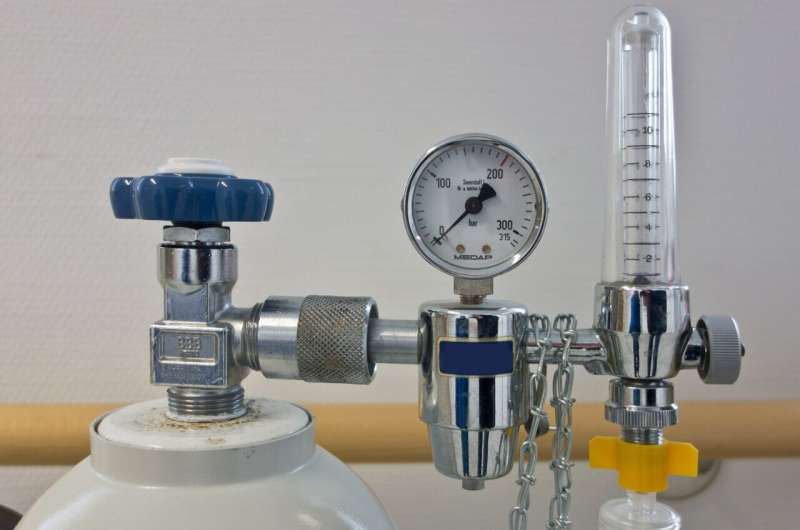Trial identifies most effective breathing support for children in intensive care


A commonly used means of delivering extra oxygen to children in intensive care is not as effective as many clinicians assume, new research has found.
The trial, published in the Journal of the American Medical Association, was led by Dr. Padmanabhan Ramnarayan, Reader in Paediatric Critical Care at Imperial College London and sponsored by Great Ormond Street Hospital for Children (GOSH).
It was the first to compare the types of breathing support given to children when they come off mechanical ventilation, to help them transition to breathing unaided.
Comparing methods
The trial compared High-Flow Nasal Cannula therapy (HFNC)—where oxygen is delivered through tubes into the nostrils—with Continuous Positive Airwave Pressure (CPAP)—for which patients wear an oxygen mask. HFNC has become increasingly popular in pediatric intensive care units, as it is seen as more comfortable for children to tolerate.
However, when the two methods were compared, the researchers found that children on HFNC needed breathing support for up to 18 hours longer than those using CPAP.
Dr. Ramnarayan, who also works as a consultant in pediatric intensive care at Imperial College Healthcare NHS Trust, said, “We know that HFNC can’t deliver the same levels of breathing support as CPAP, but it’s been assumed that the reduced effectiveness is a price worth paying for the additional comfort it provides. Our results show that may not be the case.”
The team involved clinicians and researchers from Great Ormond Street Hospital for Children, Imperial College Healthcare NHS Trust, the Intensive Care National Audit & Research Centre, London School of Hygiene & Tropical Medicine, Birmingham Children’s Hospital, Bristol Children’s Hospital and the Universities of Leeds and Salford.
Breathing support
The trial recruited 600 children ranging from newborn to age 15, in 22 pediatric intensive care units across the UK. Half of the children were randomized to move to HFNC following ventilation and the other half to CPAP.
The team set a maximum threshold of no more than 16 hours of additional time on breathing support with HFNC, given the extra comfort it provides. This limit was based on an earlier pilot study and focus groups with parents.
The trial showed that children on average spent 43 hours on breathing support with CPAP, and 51 with HFNC, eight hours longer. However, for some, the additional time was as much as 18 hours, breaching the trial’s upper limit.
Only 10 percent of children who started on CPAP following ventilation failed to tolerate it, and were moved to HFNC as a result. The team also found that these findings were consistent irrespective of the age of the child and the conditions for which they were hospitalized.
Dr. Ramnarayan added, “Most pediatricians have tended to prefer HFNC, but these results are likely to make them more cautious.
“While the choice of breathing support is specific to each patient, my own preference now is to start with CPAP, and if children struggle to tolerate it, only then to use HFNC as the next option.”
Professor Mark Peters, Consultant Paediatric Intensivist and Principal Investigator from GOSH, said, “This trial is just one of a series of fantastic collaborations between NHS Intensive Care Units that are improving the experience and outcomes for patients.”
Source: Read Full Article